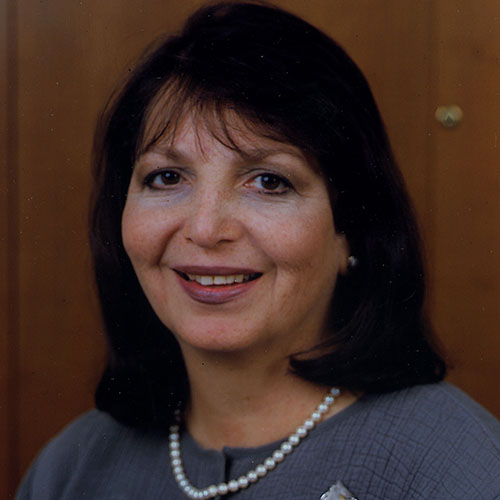Dr. Huda Akil is currently the Gardner Quarton Distinguished University Professor of Neuroscience and Psychiatry, and Co-Director and Senior Research Professor of the Molecular and Behavioral Neuroscience Institute, at the University of Michigan. Throughout her brilliant career as a pioneering neuroscience researcher, Dr. Akil has contributed to our understanding of the neurobiology of emotions, including pain, anxiety, depression and substance abuse.
Dr. Akil completed her undergraduate training in psychology and a master’s degree in psycholinguistics at the American University of Beirut. She then completed her PhD in 1972 under Dr. John Liebeskind at UCLA before undertaking a postdoctoral fellowship in neurochemistry at Stanford University.
Dr. Akil is probably best known for being among the first to provide physiological evidence for the role of endorphins in the brain, showing that endorphins can be activated by stress and inhibit pain. She is also one of only seven members of the Hope For Depression Research Task Force, whose multidisciplinary approach combines advanced knowledge of genetics, epigenetics, molecular biology, electrophysiology, and brain imaging to accelerate scientific research on depression and related mood and emotional disorders.
Her stellar research has garnered numerous awards. In 1993, she received the National Institute on Drug Abuse Pacesetter Award. The following year she was the co-recipient, with Dr. Stanley Watson, of the Robert J. and Claire Pasarow Foundation Medical Research Award for Neuropsychiatry. In 1998, Dr. Akil was honoured with the Sachar Award from Columbia University and the Bristol Myers Squibb Unrestricted Research Funds Award. Most recently, she received the 2013 AAMC Award for Distinguished Research in the Biomedical Science.
Dr. Akil is also a member of several premier scientific societies, including the Institute of Medicine of the National Academy of Science, the American Association for the Advancement of Science, and the American Academy of Arts and Sciences. She has also taken on leadership positions within these associations: she is currently the co-chair for the Neuroscience Steering Committee at the Foundation for the National Institute of Health and serves on the Council of the Institute of Medicine of the US National Academy of Sciences. Most notably, she is a past president of the Society for Neuroscience, the world’s largest neuroscience organization.
